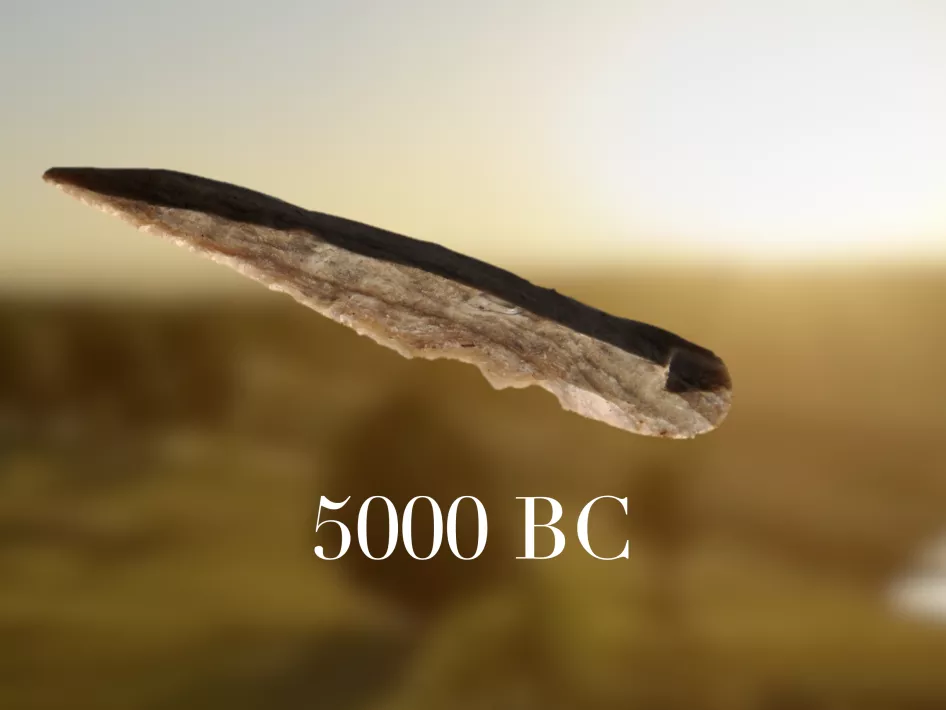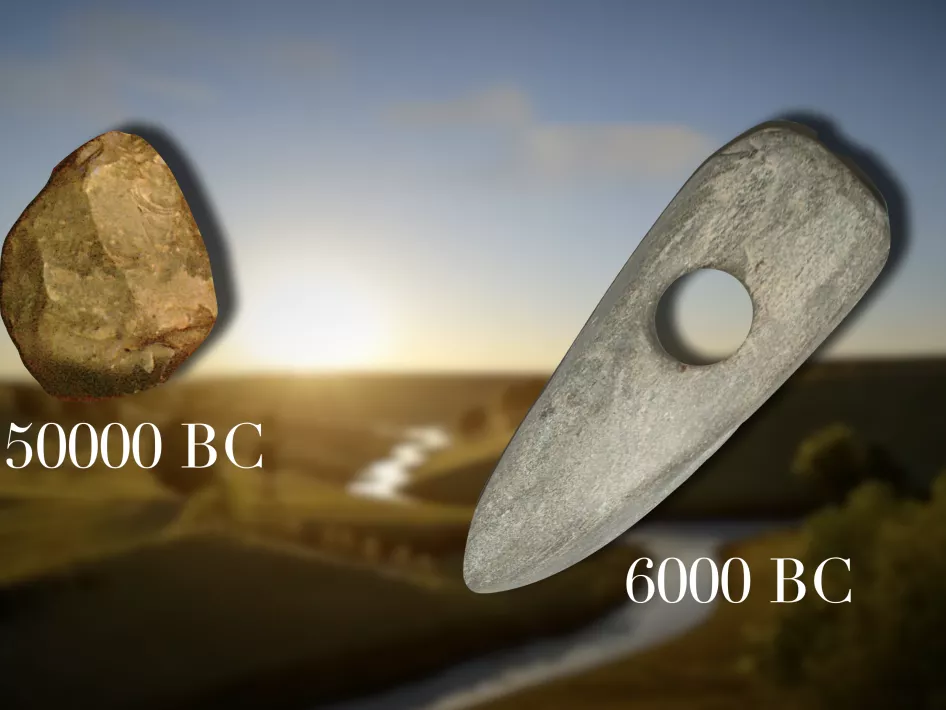The rolling undulating landscape we’re standing in now is called ’t Haselt. The lower areas are ancient channels of the Meuse, which flowed here nearly 100,000 years ago. The higher areas were the dry banks. It was a place with abundant food. In the lower parts, water was available, and the vegetation was varied. Animals found food here, making it a good place for humans too. This remained the case even after the Meuse shifted its course and flowed further west. After the Neanderthals, hunter-gatherers arrived, followed by farming settlers from Central Europe. They brought more innovations, such as livestock, food crops, and new types of tools. The hunter-gatherers in the rest of Limburg had contact with these farmers, but they didn’t yet adopt the farming lifestyle. That would only happen around 1,000 to 1,500 years later.
This gradual adaptation was also related to the less fertile soil in central Limburg. It depleted quickly, whereas in South Limburg, with its fertile loess, one could keep farming continuously. Here, however, a farming settlement had to be moved every 25-40 years. The farmers had to clear new forested areas with large flint axes, as Limburg was then covered in dense, expansive primeval forests.
All the everyday flint for their tools had to come from South Limburg. Flint from other regions was impressive. Here in ’t Haselt, such a special piece of flint was found, a so-called pointed blade, originating from France. And this stone tells us that people in those days already had international contacts.

